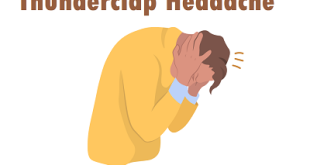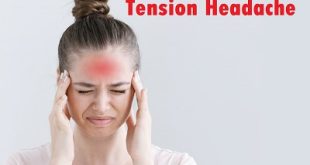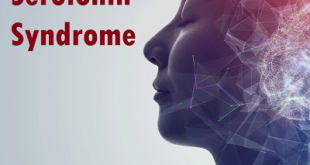Definition
Concussion is a brain injury caused by a force transmitted to the head from direct or indirect contact with the head, face, neck, or body. This can cause either a collision between the brain and skull or a strain on the neural tissue and vasculature. When there is trauma to the brain in this way, waves of cellular and molecular changes occur. In our brain, we have axons that are very thin, delicate strands connecting different thought processes and chemicals. When you take a blow to the head these axons are damaged and prevent vital processes from working correctly.
Types of Concussion
Concussions are graded as mild (grade 1), moderate (grade 2), or severe (grade 3), depending on such factors as loss of consciousness, amnesia, and loss of equilibrium.
In a grade 1 concussion, symptoms last for less than 15 minutes. There is no loss of consciousness.
With a grade 2 concussion, there is no loss of consciousness but symptoms last longer than 15 minutes.
In a grade 3 concussion, the person loses consciousness, sometimes just for a few seconds.
Risk factors
A number of different factors associated with a higher risk of experiencing a concussion have been outlined in the literature. These are outlined below.
Sex
A higher rate of concussion has been recorded for males in all sports. However, it appears likely that this is a result of the larger number of males participating in the sports investigated. In an evidence-based guideline update by Giza et al in 2013, it was suggested that the association of certain sex with higher rates of concussion varies across different sports, with a higher rate of concussion for females in both soccer and basketball. Other studies have suggested that the higher incidence of concussion noted in females may be a result of greater reporting of concussive symptoms by female athletes and as a result of their smaller head size and neck strength relative to their male counterparts.
Type of Sport
As stated above, the risk of concussion associated with sports varies across different sports. Australian rugby and American football are associated with the highest incidence of concussion, while a lower risk is associated with sports such as baseball, softball, volleyball and gymnastics. Several high quality studies have associated soccer with the greatest concussion risk for female athletes.
Position
The athlete’s playing position can also be associated with higher/lower concussion risk. In American football greater risk has been associated among linebackers, offensive linemen, and defensive backs compared to receivers. Currently there is insufficient evidence to associate player position with greater/lesser concussion risk in other sports.
Athlete-related Factors
Several factors specific to the individual athlete have been associated with greater concussion risk, including a body mass index greater than 27 kg/m2. The training time of fewer than 3 hours also weekly likely increases the risk of concussion. Currently, in the literature, there is insufficient evidence to determine links between age and competition level and risk of concussion.
Causes of Concussion
The brain floats in cerebral fluid, which protects it from jolts and bumps. A violent jolt or a severe blow to the head can cause the brain to bump hard against the skull. This can result in the tearing of nerve fibers and the rupturing of blood vessels under the skull, leading to a build-up of blood.
Concussions are most commonly caused by:
- Automobile accidents
- Sports injuries
- Falls
- Horseback riding accident
- Playground accidents
- Cycling accidents
- Assaults
- Explosions
Signs and Symptoms
Concussion signs are what someone could observe about you to determine if you have a concussion. Signs of a concussion range from obvious to much more nuanced, but even one sign of a concussion after a hit to the head should be reported to a medical professional.
Common concussion signs include:
- Loss of consciousness
- Problems with balance
- The glazed look in the eyes
- Amnesia
- Delayed response to questions
- Forgetting an instruction, confusion about an assignment or position, or confusion of the game, score, or opponent
- Inappropriate crying
- Inappropriate laughter
- Vomiting
Concussion symptoms
The symptoms are what someone who is concussed will tell you that they are experiencing. Concussion symptoms typically fall into four major categories:
Somatic (Physical) Symptoms
- Headache
- Light-headedness
- Dizziness
- Nausea
- Sensitivity to light
- Sensitivity to noise
Cognitive Symptoms
- Difficulties with attention
- Memory problems
- Loss of focus
- Difficulty multitasking
- Difficulty completing mental tasks
Sleep Symptoms
- Sleeping more than usual
- Sleeping less than usual
- Having trouble falling asleep
Emotional Symptoms
- Anxiety
- Depression
- Panic attacks
It may take a few days for concussion symptoms to appear after the initial injury.
Complications
- Side effects of a concussion cause changes in how the brain functions, such as reduced reaction time. This can increase your chance of getting another concussion if you return to play before seeking treatment.
- Repeated concussions can cause problems such as lasting cognitive issues.
- No athlete should return to the game until all symptoms are gone and a doctor has cleared him or her to play.
Diagnosis and test
Diagnosing a concussion can be tricky. Although any degree of head trauma can cause one, the most common concussions that result from mild head injuries do not involve identifiable bleeding or bruising in the brain.
This means that using a brain scan technique such as magnetic resonance imaging (MRI) or computed tomographies (CT), which are done to diagnose a severe traumatic brain injury (TBI), isn’t a viable way to diagnose a concussion.
Since brain scans can identify bruising or bleeding in the brain, but not the cellular damage thought to cause concussion symptoms, doctors must rely on a careful assessment of symptoms and neuropsychological function.
Sometimes this is done on-site, immediately after an injury, when an athlete experiences a blow or jolt to the head and a decision must be made quickly about whether he or she can safely get back into the game.
Concussion treatment
The main treatment is rest. Your doctor may tell you to take time off from work or school. Over time, the symptoms will go away as your brain heals.
Symptoms typically last about 6 to 10 days, depending on how severe the concussion is. Most people get better within a week. People with symptoms that last more than one week should see their doctor.
General advice for treating a concussion includes the following:
- Get plenty of sleep at night and rest during the day.
- Avoid visual and sensory stimuli, including video games and loud music.
- Eat well-balanced meals.
- Ease into normal activities slowly, not all at once.
- Ask your doctor’s opinion about when to return to work or school.
- Make sure to let employers or teachers know that you had a concussion.
- Avoid strenuous physical or mental tasks.
- Avoid activities that could lead to another concussion, such as sports, certain amusement park rides, or (for children) playground activities.
- Get your doctor’s permission before driving, operating machinery, or riding a bike (since a concussion can slow one’s reflexes).
- If necessary, ask your employer if it is possible to return to work gradually (for example, starting with half-days at first). Students may need to spend fewer hours at school, have frequent rest periods, or more time to complete tests.
- Take only those drugs approved by your doctor.
- Do not drink alcohol without your doctor’s okay. Alcohol and other drugs may slow recovery and increase the chance of further injury.
- For some people, an airplane flight shortly after a concussion can make symptoms worse.
- Avoid tiring activities such as heavy cleaning, exercising, working on the computer, or playing video games.
- See your doctor again for testing before you resume your routines, including driving, sports, and play.
Prevention
Reduce your chances of getting a concussion:
- Wear a seat belt every time you drive or ride in a car or other motor vehicle.
- Never drive when you are under the influence of drugs or alcohol.
- Make your home safer to prevent falls.
Wear a helmet for any activity that can cause a fall or impact to the head or neck. Examples include bike riding, football, baseball, hockey, ATV riding, skateboarding, skiing, snowboarding, inline skating, and horseback riding. Helmets help protect your skull from injury. But brain damage can occur even when a helmet is worn.
Reduce your child’s chances of getting a concussion:
- Use child car seats and booster seats correctly.
- Teach your child bicycle safety.
- Teach your child how to be safe around streets and cars.
- Keep your child safe from falls.
- Teach your child playground safety.
- Help your child prevent injury from sports and other activities.
 Diseases Treatments Dictionary This is complete solution to read all diseases treatments Which covers Prevention, Causes, Symptoms, Medical Terms, Drugs, Prescription, Natural Remedies with cures and Treatments. Most of the common diseases were listed in names, split with categories.
Diseases Treatments Dictionary This is complete solution to read all diseases treatments Which covers Prevention, Causes, Symptoms, Medical Terms, Drugs, Prescription, Natural Remedies with cures and Treatments. Most of the common diseases were listed in names, split with categories.







